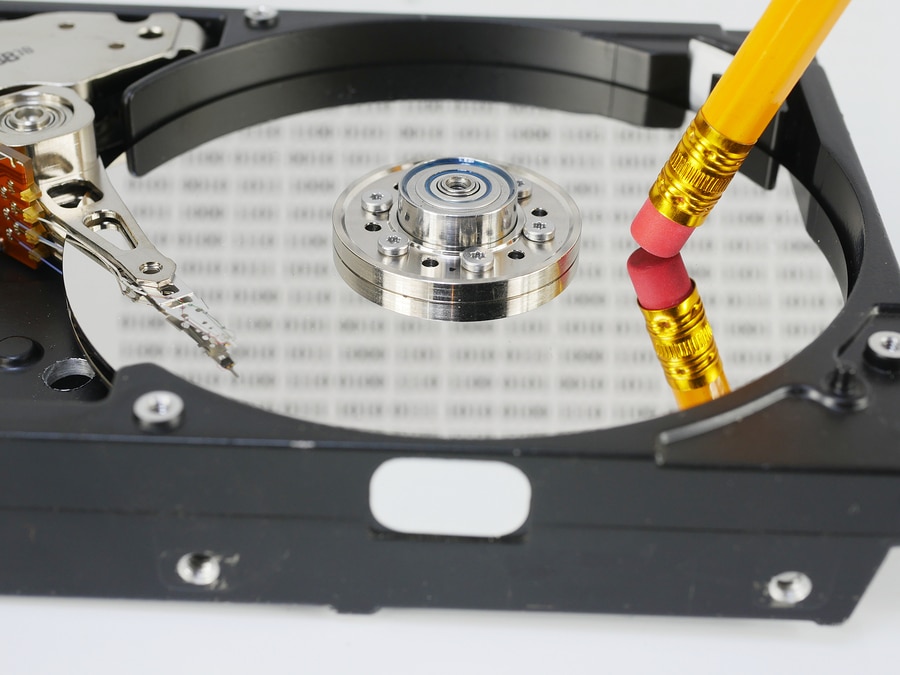Why Overwriting Isn’t Enough to Erase Data

Data destruction is a tricky business. Computer and software manufacturers know that sometimes people accidentally delete things they didn’t mean to, and they may even save new data and accidentally overwrite what they deleted. For this reason, there are a variety of protections in place that allow users to recover lost data, even if it’s been overwritten.
Among the recovery options, you can try are file recovery software, restoring a previous version of the file, and performing a system restore to a previous save point before the file was deleted or overwritten, just for example. While this is a great fallback when you have a panic moment because a needed file is missing, it’s not so great for the purposes of data destruction.
If you think overwriting is enough to ensure that confidential data will not be recovered once it is deleted, you can see why this assumption is a fallacy. Why doesn’t overwriting work to eliminate data, and what can your North Dakota company do to ensure total data destruction to protect your business and your customers?
Overwriting vs. Wiping
The thing most people don’t understand is that there is a difference between overwriting and wiping your hard drives to remove/replace existing data. In truth, your system is overwriting constantly without your express consent or knowledge. This has to do with how data is saved on your hard drives.
When you save a file, for example, it deposits to available disc space. This includes not only blank space, but also space that currently houses other data (which has been deleted, virtually freeing the space). Until deleted data is overwritten, it is still sitting there, waiting to be found. It may be partially or completely overwritten in time, but that doesn’t necessarily mean clever hackers can’t find fragments or completely reconstitute it.
Wiping is a type of overwriting, but it differs in one key way from the overwriting your computer naturally performs all the time – it overwrites everything on a disc, eliminating all traces of previous data and replacing it wholesale with a series of meaningless ones and/or zeros (sometimes referred to as zeroing out). For the purposes of complying with data destruction regulations like consumer privacy laws, wiping will have to include a multi-step process whereby several passes are made to preclude the possibility of any amount of data recovery.
Why Professional Help is Wise
More and more, hardware and software systems are designed to prevent data loss, and this is not good news for North Dakota businesses intent on data destruction. Luckily, you don’t have to go it alone and risk making common errors that could increase risk factors for identity theft and data breach.
When you work with a reputable, reliable, certified ITAD service provider who offers to wipe before remarketing your old devices, you can alleviate concerns and comply with applicable laws that protect your company and your customers.
If you’re seeking a suitable partner in data destruction, contact the qualified professionals at SEAM today at 605-274-7326 (SEAM) or online to learn more and get a quote for services.
SEAM provides IT recycling and data destruction services including onsite shredding and hard drive wiping to South Dakota, North Dakota, Minnesota, Iowa, and Nebraska.
Schedule a pickup or contact us for more information.





